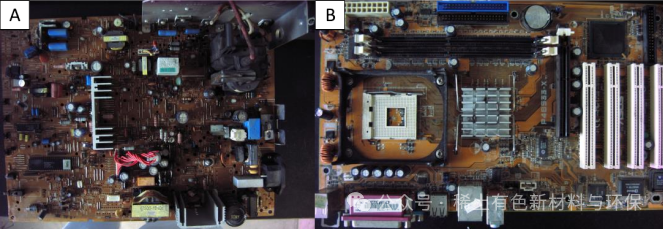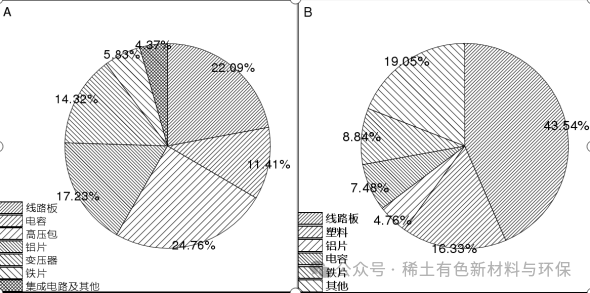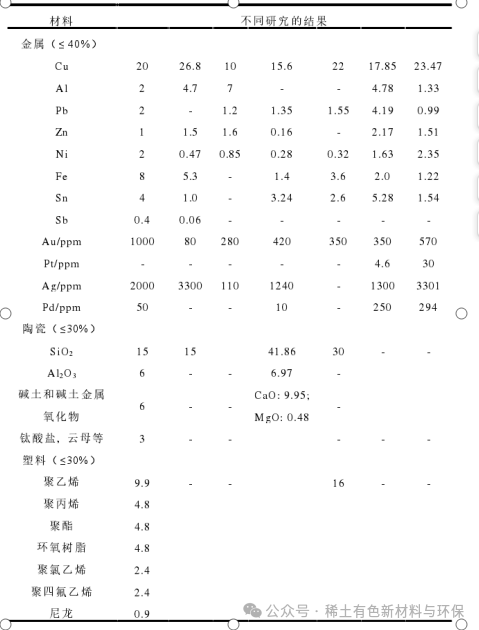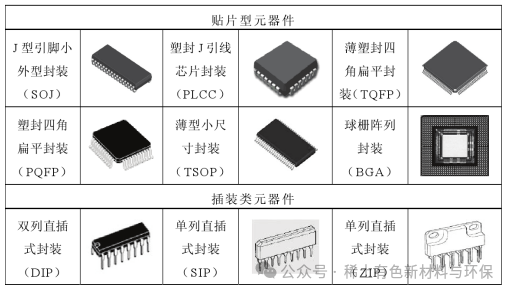Waste circuit boards, as typical electronic waste disassembly components, are among the most challenging electronic waste to process due to their dense structure, high metal content, complex composition, and the presence of brominated flame retardants. Over the past decade, extensive research has been conducted on resource recovery from waste circuit boards, leading to the development of a process route primarily focused on the mechanical physical method for copper powder recovery, which has gradually been applied nationwide.
Generally speaking, CRT display circuit boards are made of phenolic resin boards, while computer mainboard circuit boards are made of epoxy resin boards. They mainly contain capacitors, integrated circuit chips, CPUs, memory modules, heat sinks, resistors, various slots, high-voltage packages, diodes, transistors, etc. The typical material composition and structure of waste circuit boards, as well as the components, are shown in Table 1 and Figures 1, 2 below.

Figure 1 Typical Structure of Waste Circuit Boards

Figure 2 Typical Component Composition of Waste Circuit Boards
Table 1 Typical Material Composition in Waste Circuit Boards

In waste circuit boards, the packaging forms of electronic components include dual in-line package (DIP), ball grid array (BGA), quad flat package with buffer pads (BQFP), small pin pitch (QFP), and quad flat package (QFP) among various packaging forms (see Table 2). In surface mount technology, precious metals are often used as wires to connect components, especially chips, to the circuit board, and are directly soldered on the front.
Table 2 Classification and Packaging Forms of Common Electronic Chips on Circuit Boards

The disassembly of electronic components is mainly divided into several methods: manual disassembly, soldering thermal disassembly, solution heating disassembly, and mechanical disassembly. A comparison of various disassembly methods is shown in Table 3:
